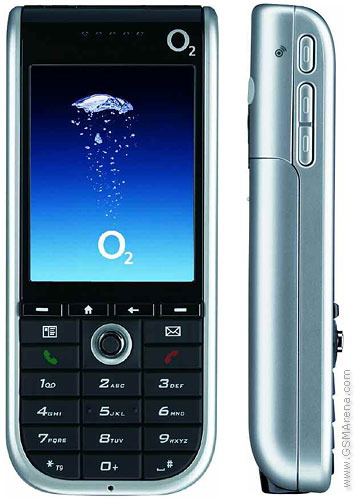
Device Overview
The O2 XDA Orion was a prominent device in its time, showcasing features that were quite advanced for the mid-2000s. Designed as a smartphone operating on Microsoft Windows Mobile 5.0, it provided functionality that catered to both professional and personal use. This article delves into a comprehensive analysis of the O2 XDA Orion, examining its specifications, features, and its impact during its initial launch period.
Network Capabilities
The O2 XDA Orion supported GSM technology, allowing for widespread connectivity across multiple regions. It operated with 2G bands including GSM 850, 900, 1800, and 1900, ensuring that users could maintain network access in most parts of the world where GSM was available. Additionally, it supported GPRS Class 10 and EDGE Class 10, enhancing data transmission over the GSM network, which was critical for mobile internet usage at the time.
Design and Build
Crafted with a focus on portability, the device measured 107.5 x 46 x 17.5 mm and weighed merely 106 grams. Such dimensions made it a compact and lightweight choice for users seeking convenience in handling. The utilization of Mini-SIM technology aligned with the device trends prevalent during that era.
Display Characteristics
The O2 XDA Orion possessed a TFT display capable of rendering 65K colors, which was satisfactory for its time. The screen size was 2.2 inches, providing a resolution of 240 x 320 pixels at an approximate density of 182 ppi. The display’s proportion relative to the body was about 30.3%, ensuring a compact viewing area that was sufficient for conducting everyday tasks.
Platform and Performance
Under the hood, the device ran Microsoft Windows Mobile 5.0 Smartphone OS, empowering users with a suite of productivity and entertainment applications. It featured the TI OMAP 850 chipset and a 200 MHz ARM926EJ-S CPU. Although not exceedingly powerful by contemporary standards, this configuration was competent for handling fundamental smartphone functions and applications of the time.
Memory and Storage
Equipped with 64MB RAM and 64MB ROM, the O2 XDA Orion provided basic memory provisions that were standard for devices during that period. Additionally, it offered a MiniSD card slot, enabling users to expand storage capacity, which was essential for accommodating additional applications and media.
Camera Features
The main camera was a 1.3 MP single sensor, capable of capturing photos that were adequate for casual photography needs. It also supported video recording, allowing users to capture and store video memories, albeit at a quality reflective of early mobile video technologies.
Audio and Multimedia
The device included a loudspeaker system and supported a range of alert types including vibration, downloadable polyphonic tones, MP3 ringtones, and a composer function. Notably, it lacked a 3.5mm audio jack, which was a prevalent feature absent in select models at the time, necessitating alternative solutions for personal audio use.
Connectivity Options
On the connectivity front, the O2 XDA Orion was equipped with Wi-Fi 802.11b, enabling internet connectivity without relying solely on mobile data. Bluetooth 1.2 facilitated wireless file transfers and connections to other devices. It did not include GPS positioning or a radio, but provided an infrared port and utilized a miniUSB for charging and data transfer.
Sensors and Navigational Features
While the device lacked advanced sensors seen in later smartphone models, it did include a browser supporting WAP 2.0/xHTML and HTML with PocketIE, enhancing web navigation possibilities for its users.
Battery Performance
The device was powered by a removable Li-Po 1150 mAh battery, providing a standby time of up to 150 hours and a talk time of approximately 4 hours. These figures underscored the emphasis on achieving a balance between performance and battery longevity, pivotal for its users’ mobile experiences.
Conclusion
In essence, the O2 XDA Orion was a noteworthy product reflecting the technological benchmarks and consumer expectations of its time. Launched in October 2005 and subsequently discontinued, it served as a bridge in the evolution of mobile technology, paving the way for succeeding iterations. Despite the vast advancements that have occurred since its production, the device remains a testament to the spirited innovation of its era.
Key Features of O2 XDA Orion
- Supports GSM technology with 2G bands (GSM 850 / 900 / 1800 / 1900)
- Compact dimensions: 107.5 x 46 x 17.5 mm and lightweight at 106 g
- 2.2-inch TFT display with 240 x 320 pixels resolution
- Runs on Microsoft Windows Mobile 5.0 Smartphone OS
- Powered by 200 MHz ARM926EJ-S CPU with TI OMAP 850 chipset
- 1.3 MP main camera with video recording capability
- Memory expandable via MiniSD card slot
- Connectivity options include Wi-Fi 802.11b, Bluetooth 1.2, and Infrared port
- Removable Li-Po 1150 mAh battery with up to 4 hours talk time
Drawbacks of O2 XDA Orion
- Outdated technology: Limited to GSM networks only.
- Discontinued status: No longer supported or available in the market.
- Small display: 2.2 inches with a 240 x 320 resolution, and low 65K colors.
- Low performance: 200 MHz ARM926EJ-S CPU, with only 64MB RAM.
- Limited camera capabilities: Single 1.3 MP main camera.
- Absent features: No selfie camera and no GPS positioning.
- No 3.5mm audio jack for standard headphones.
- Limited connectivity options: Lacks modern wireless options, no 3G/4G/5G support.
- No built-in radio functionality.
- Low battery capacity: 1150 mAh, offering only up to 4 hours talk time.

View Also
More Phones
All Rights Reserved +13665 Phones © Mobilawy 2025

























